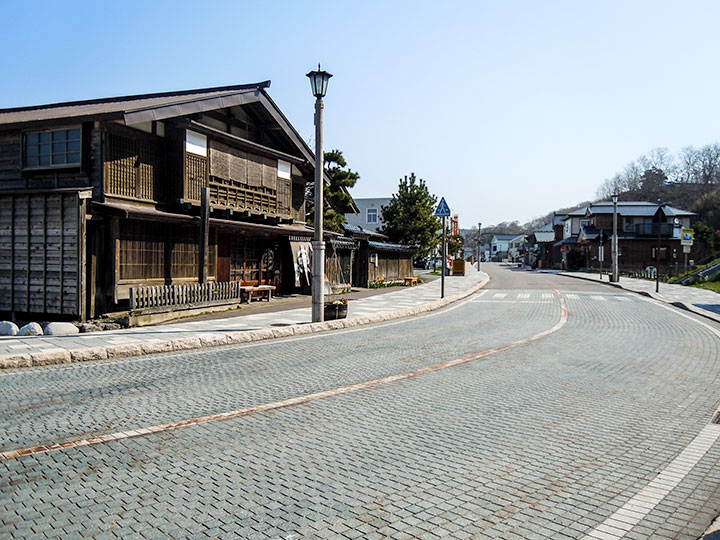The Charming Historic Route: Inishie Kaido in Esashi
The historic route known as ‘Inishie Kaido’ (いにしえ街道) attracts visitors with its beautifully preserved old-town charm reminiscent of the Edo period.
Esashi, one of the oldest towns in Hokkaido alongside Matsumae, is home to several historic houses and buildings. These structures are vital to Esashi’s identity and play a significant role in the town’s revitalization efforts.
Inishie Kaido serves as a living history museum, showcasing Esashi’s rich cultural heritage. This helps visitors appreciate the town’s historical and cultural assets.
The town’s name, ‘Esashi,’ is derived from the Ainu word for ‘cape.’ From here, you can take a ferry to Okushiri Island. Esashi enjoys mild winters with little snowfall.
Historically, Esashi thrived on Pacific herring fishing and trade via the northern shipping route known as ‘Kitamaesen’ (北前船) during the late Edo period. Esashi was once one of Hokkaido’s main port cities.
If you come here, it would be good to also visit the small towns along the Japan Sea side towards Matsumae. This area has prospered since ancient times in Hokkaido, and it offers a slightly different charm compared to other parts of the island.
It may not have the grandeur of Eastern Hokkaido, but you’ll be captivated by the beautiful sea and coastal scenery. The seafood here is exceptionally delicious, so be sure to taste it while you’re at it.
Link
Portal site of Tourist information of Hokkaido Esashi Town
Access
If you go directly from Hakodate to Esashi, it takes about 1 hour and 20 minutes.

The beautiful street called ‘Inishie Kaido’ (いにしえ街道), meaning ‘Good Old Route’.

Every house and building is designed in the traditional style of the Edo era. This particular house serves as a private school for calligraphy, known as Shodo (書道). The house combines both historical charm and modern functionality.

Some old signs are still in use.

Esashi town

The heart of Inishie Kaido street.

The former Nakamura House, a marine wholesale dealer’s residence from the Edo period, is designated as a national important cultural property since 1971. The house is open to the public from 9:00 to 17:00.

The Honda car dealership maintains a blend of European and Japanese architectural styles typical of the Meiji era.

A traditional sake dealer.

The sign of a watch shop.


The former government office of Hiyama, now the local history museum.


This is a cafe.

Yokoyama House, designated as a tangible folk cultural asset of Hokkaido, has stood here since 1786, spanning over 200 years. Today, the 8th generation of the Yokoyama family resides here.
Legend has it that the famous buckwheat noodles in Kyoto known as ‘Nishin Soba’ originated from herrings transported by Kitamaesen ships from Esashi to Kyoto via the Sea of Japan. The current master of Yokoyama suggests that Esashi might have been one of the routes for Nishin soba.
Yokoyama House is open to the public.
Opening hours: End of April to end of November, 9:00 AM – 5:00 PM. Appointment required from December to early April.

This is the Kaiyomaru Museum, showcasing the warship built in Holland in 1866. Kaiyomaru served as the main warship of the Tokugawa government. However, with the advent of the Meiji era, the power shifted, and some retainers of the Tokugawa clan took the ship and fled to Hokkaido. Eventually, Kaiyomaru ran aground in Esashi.
The museum offers insights into the history of Kaiyomaru and Esashi during that period.

Kaiyomaru is open to the public for exploration and discovery.
Open
- No closed from April to October
- Closed Monday and the next day of holiday from November to December
- Closed from December 31 to March
- 9:00 – 17:00
Related Articles
How to Experience Minshuku: Authentic Local Seafood in Shiriuchi Town

